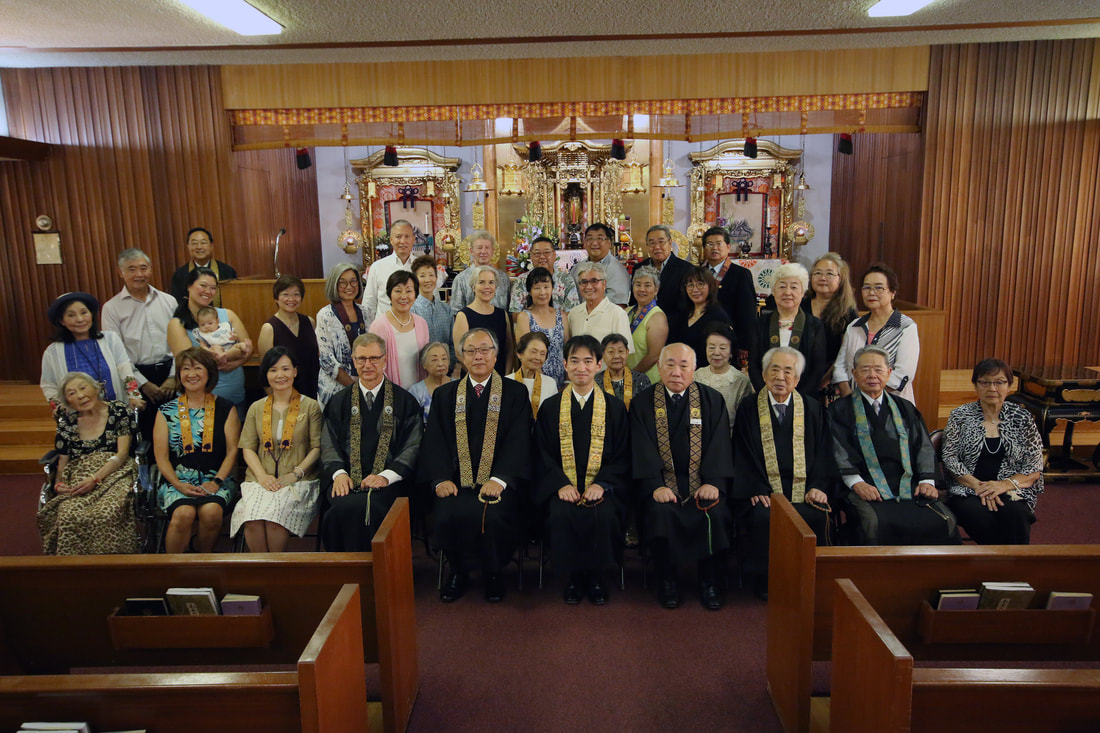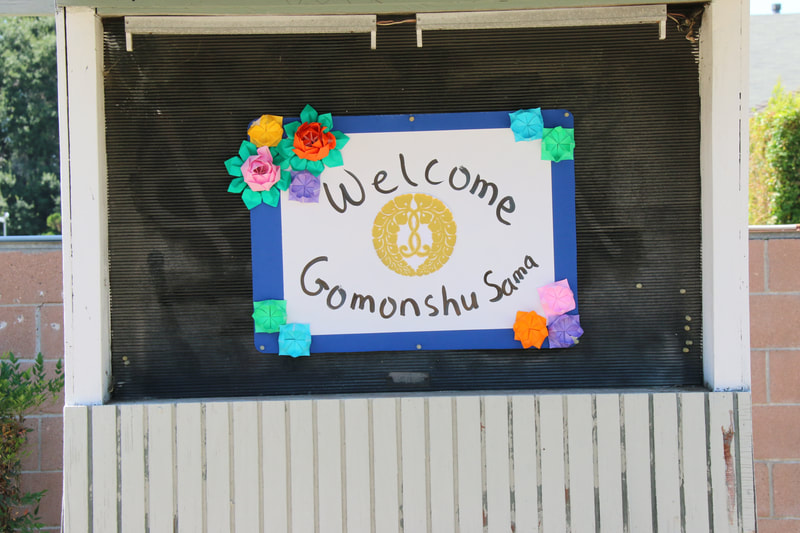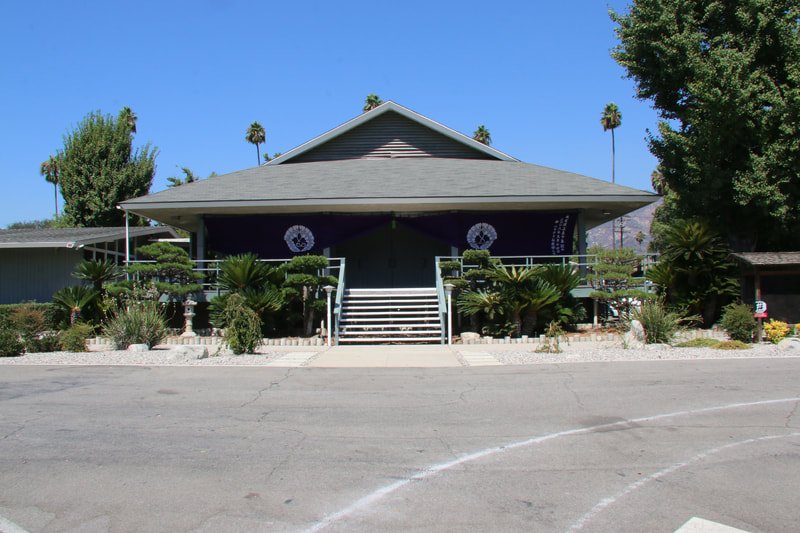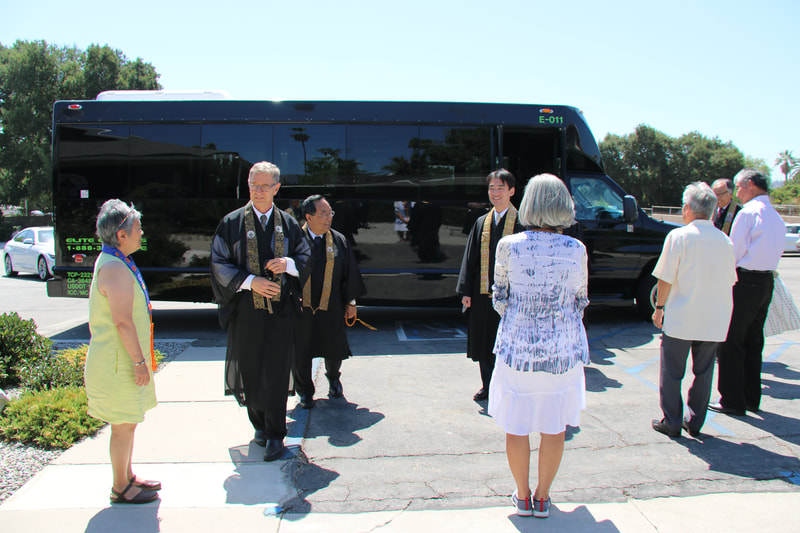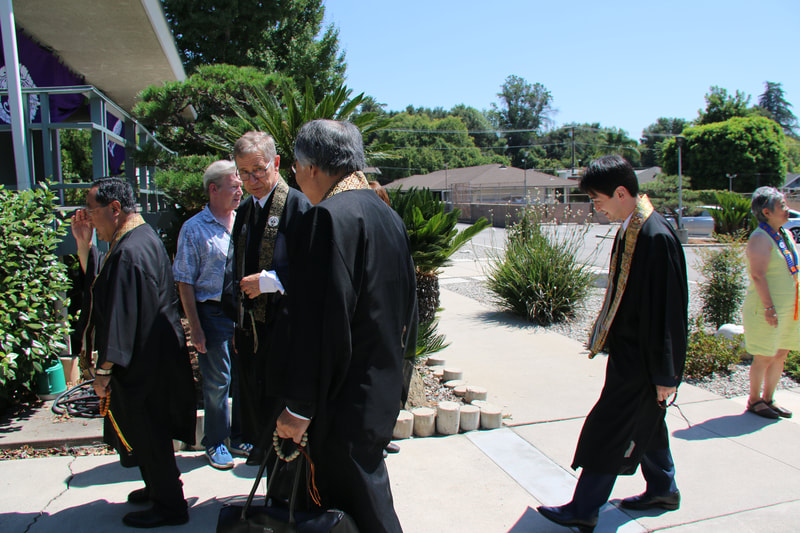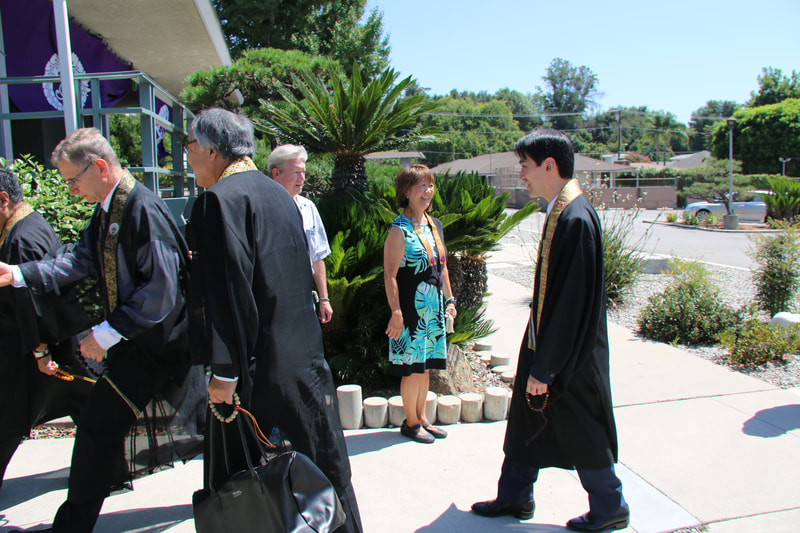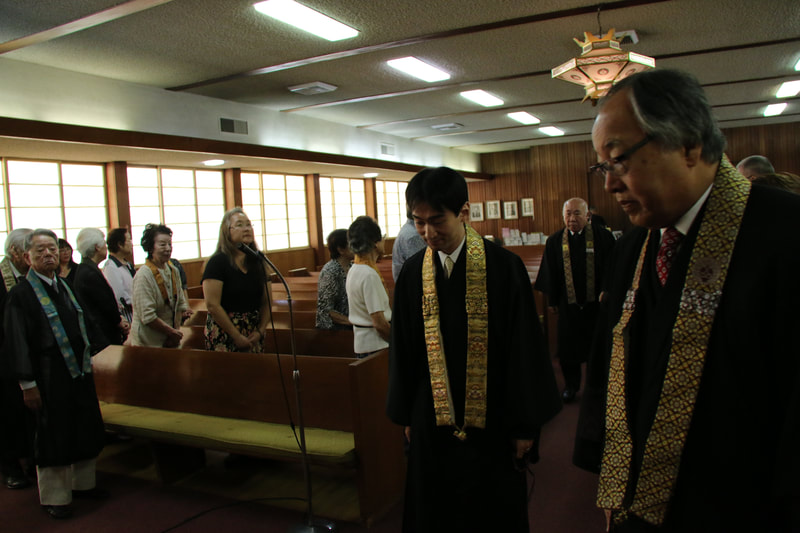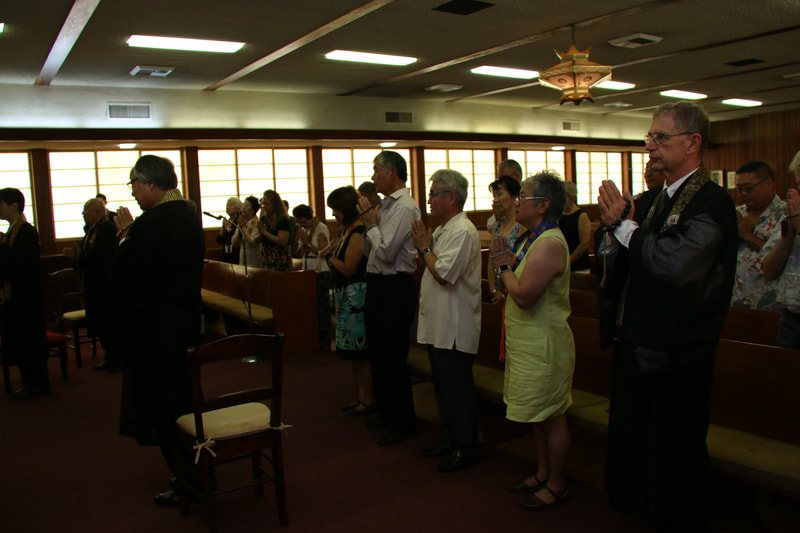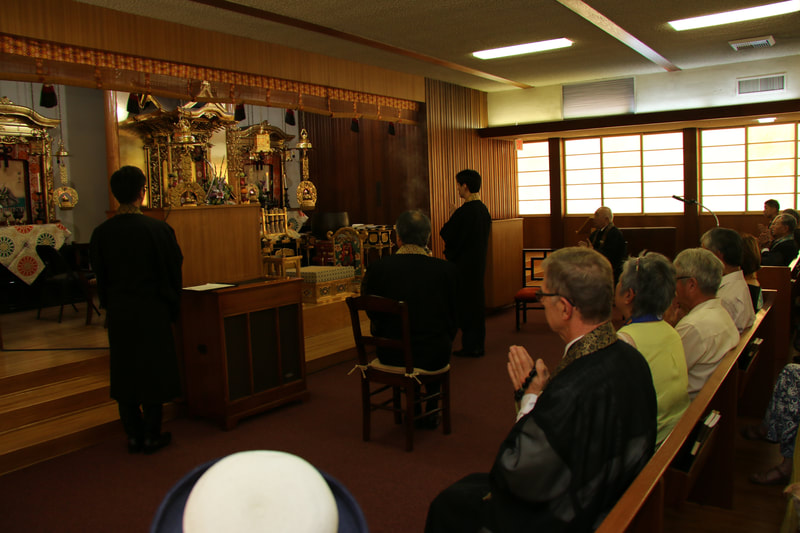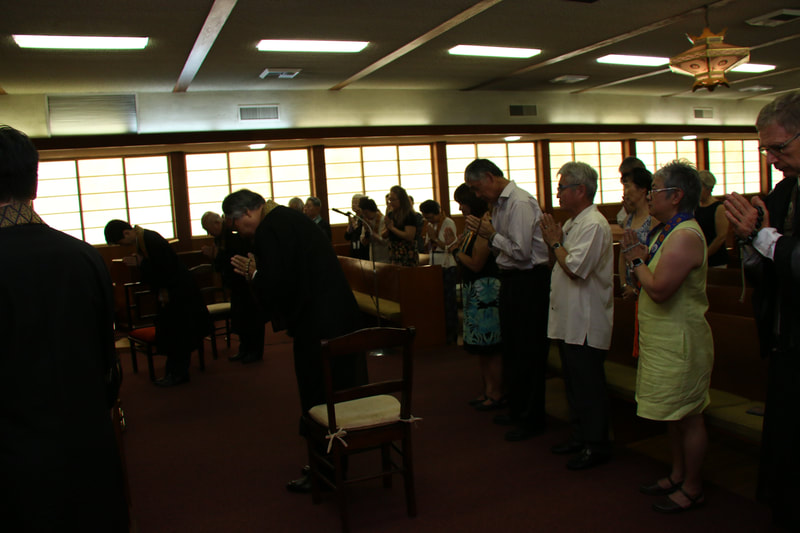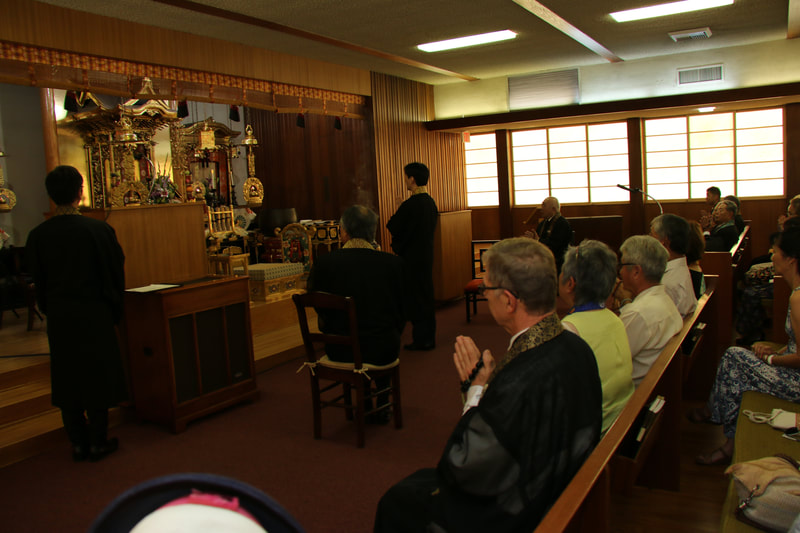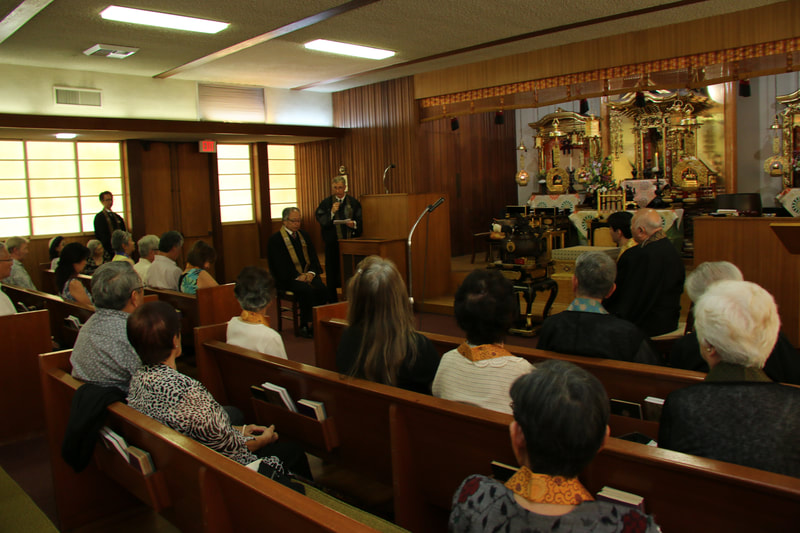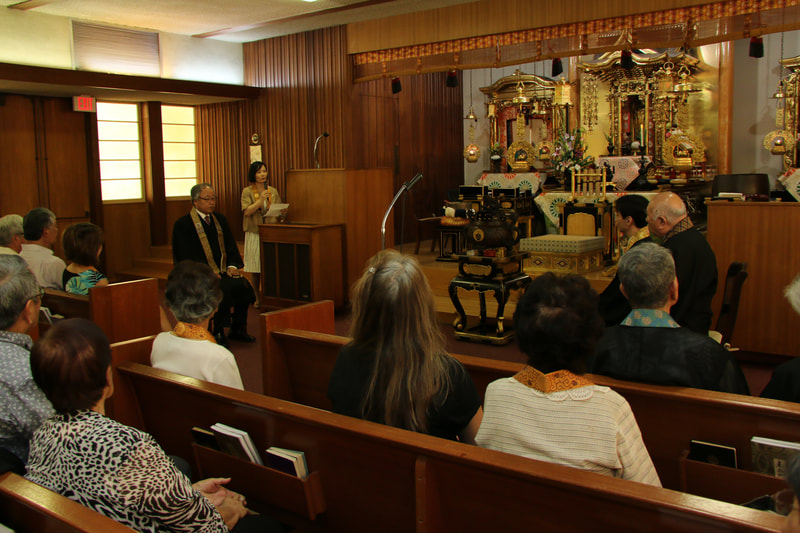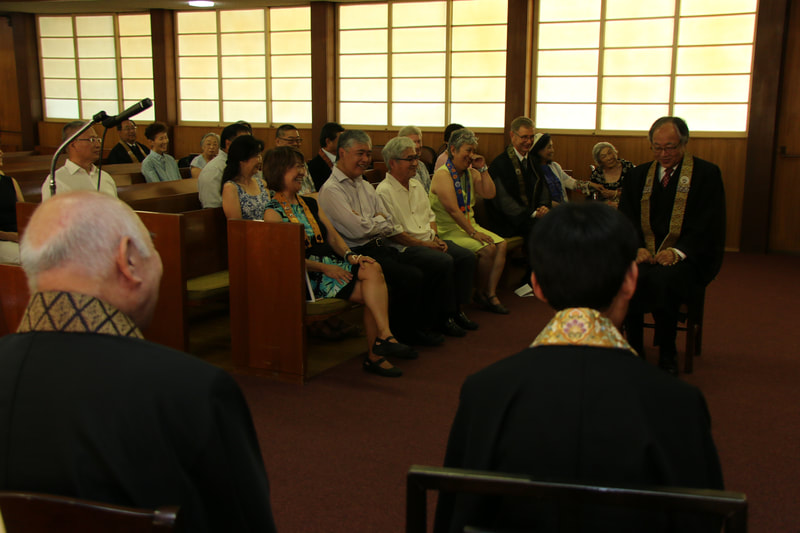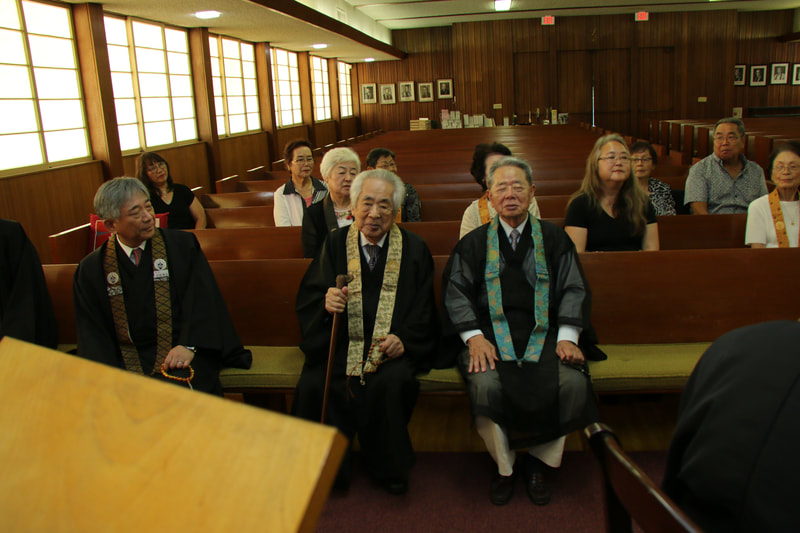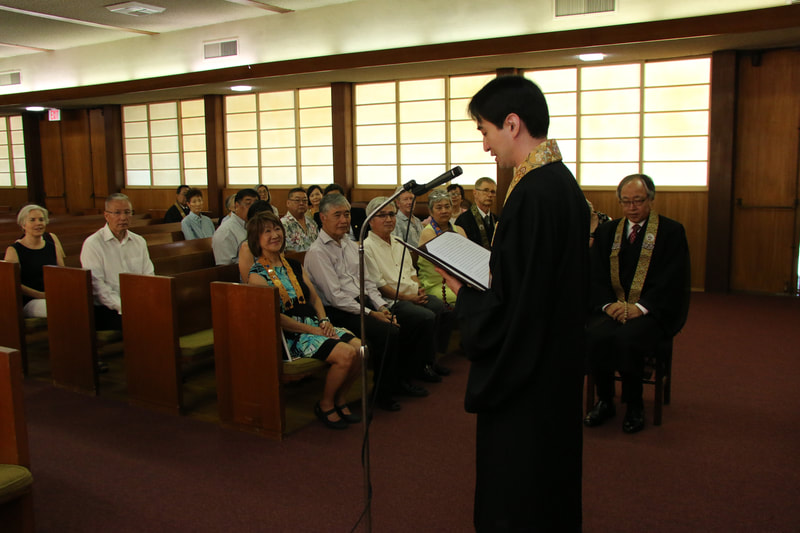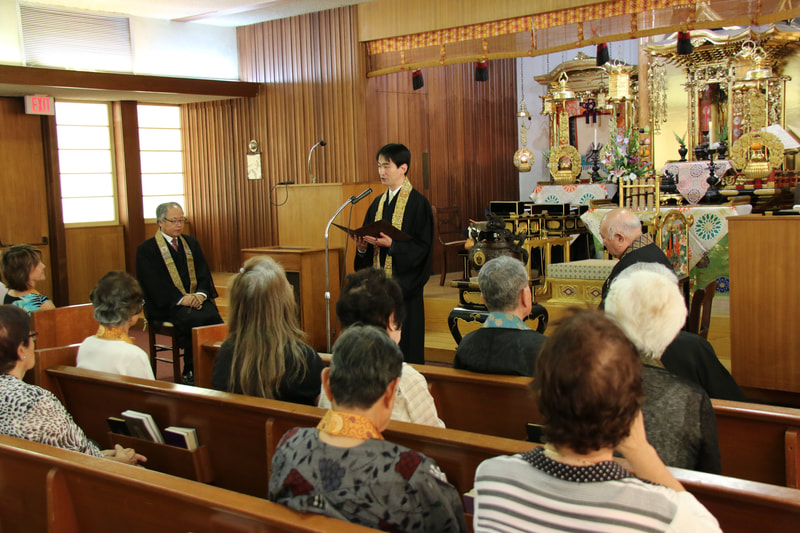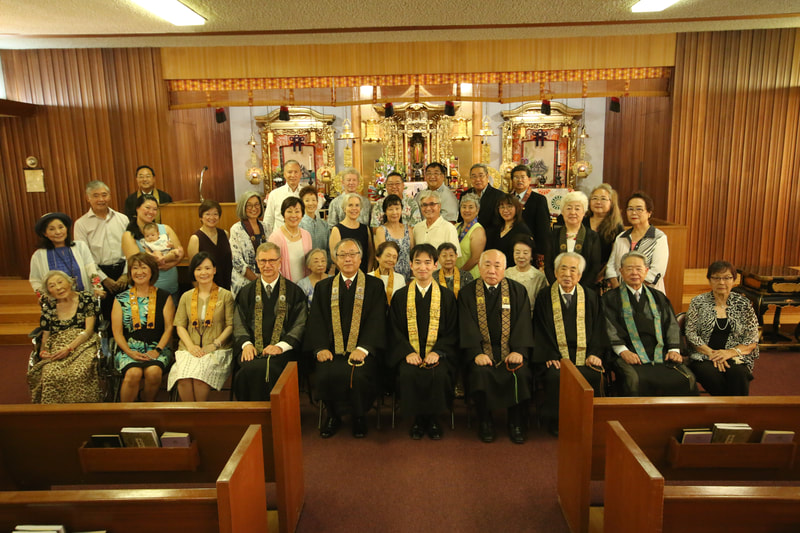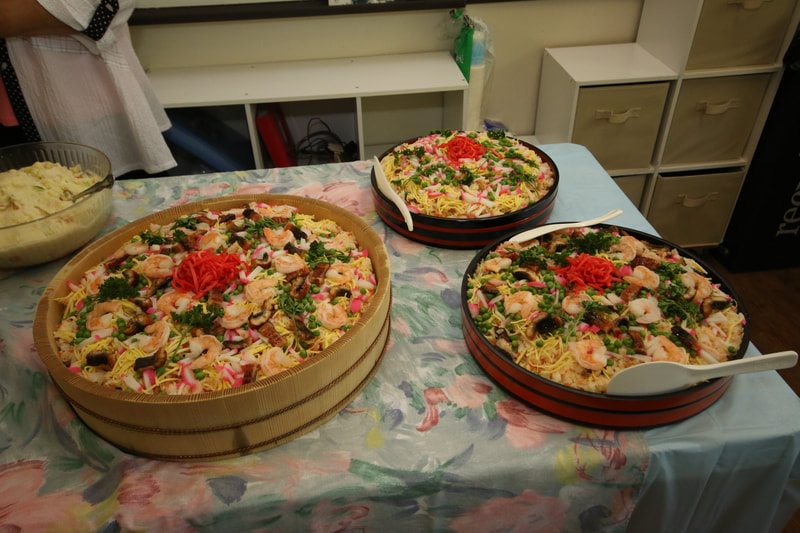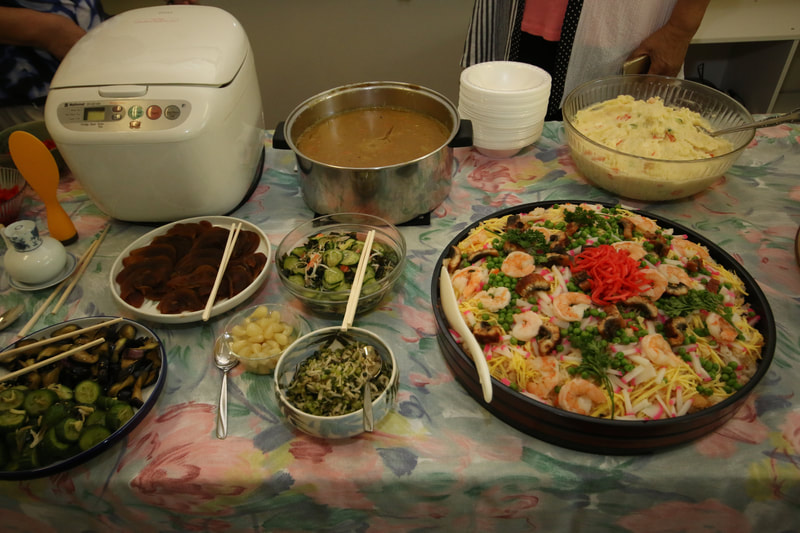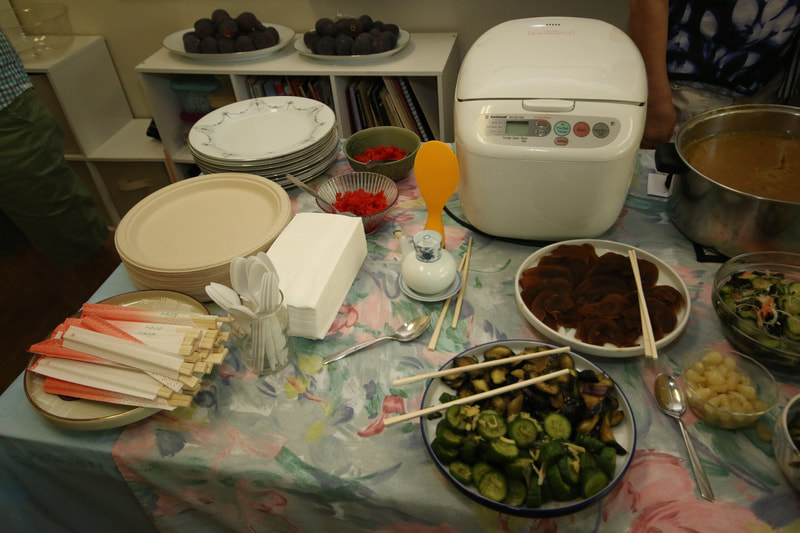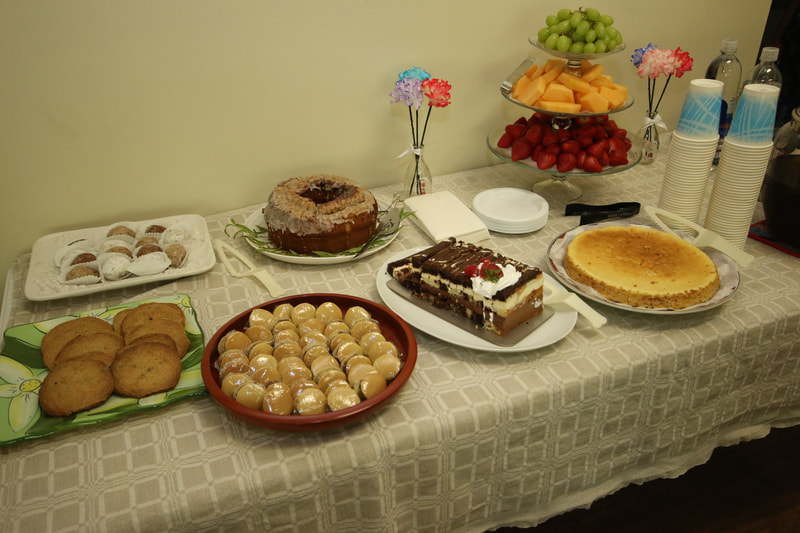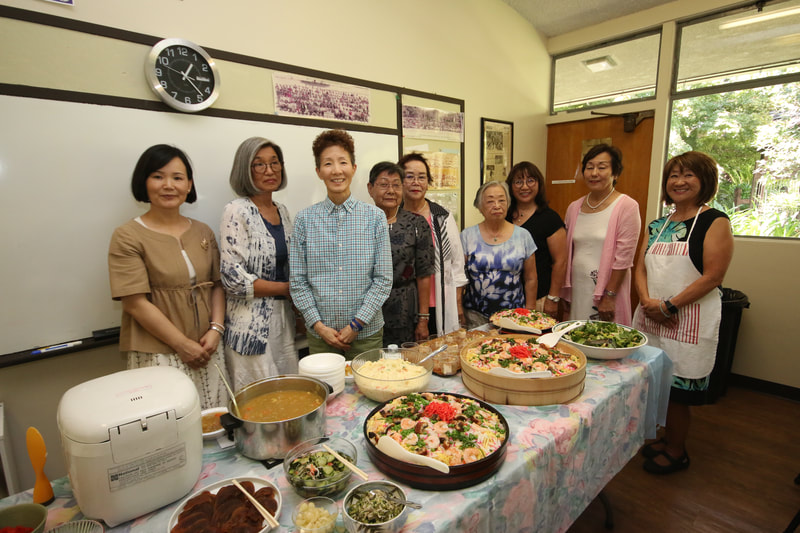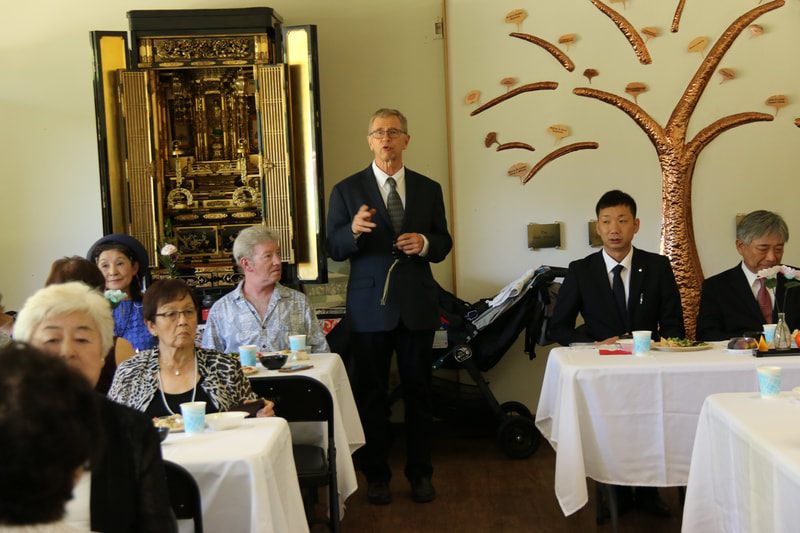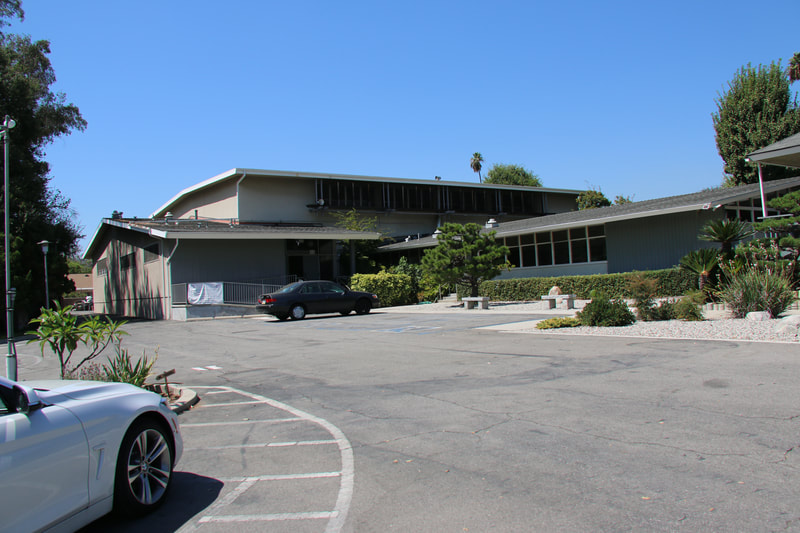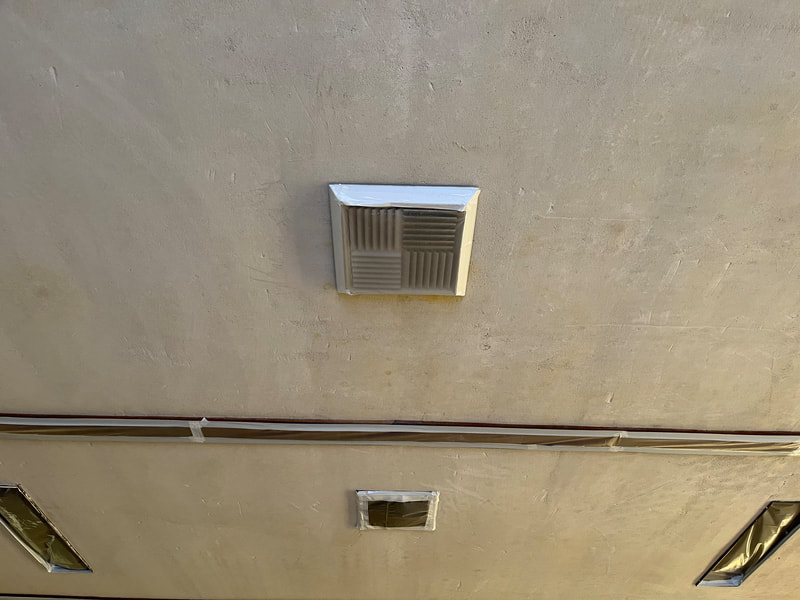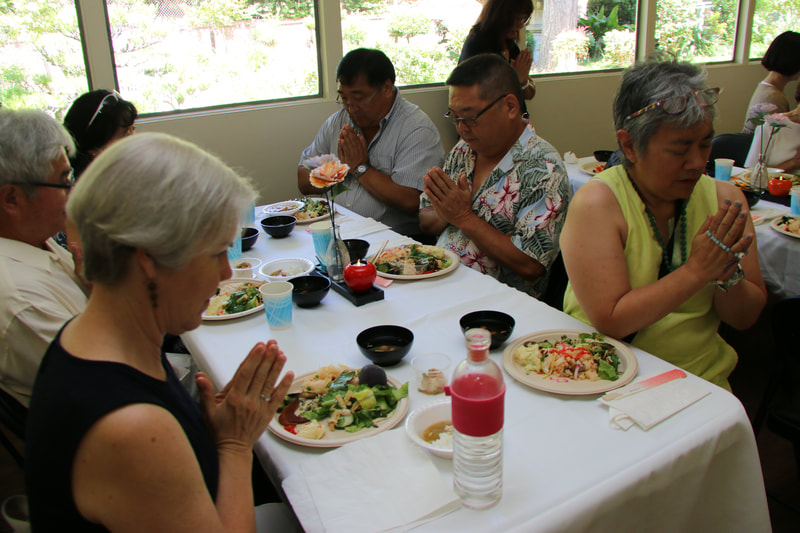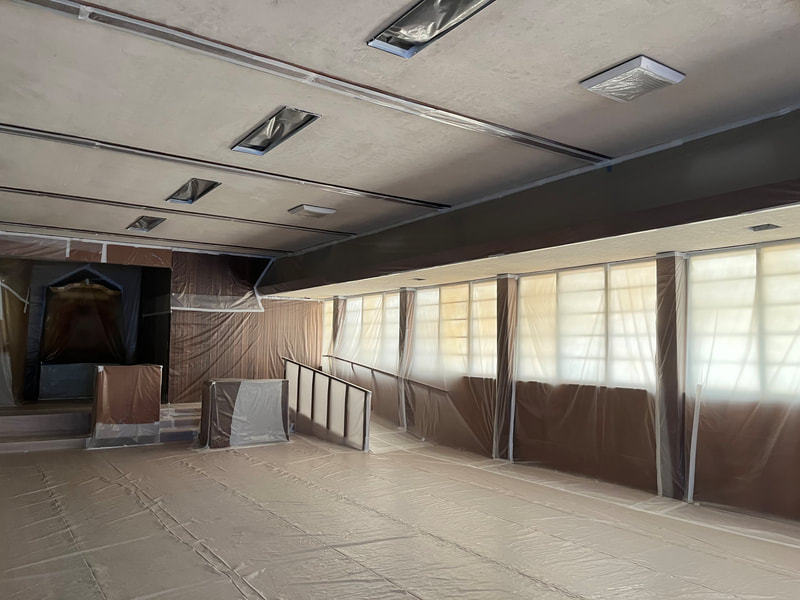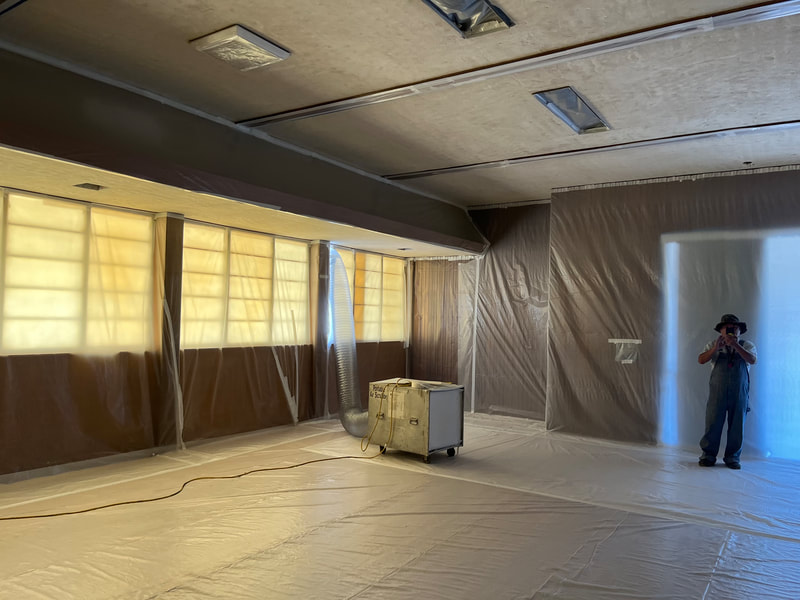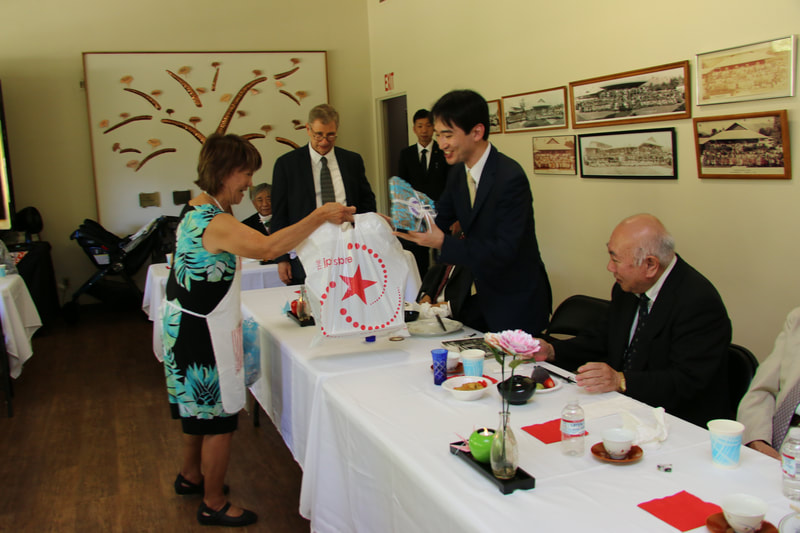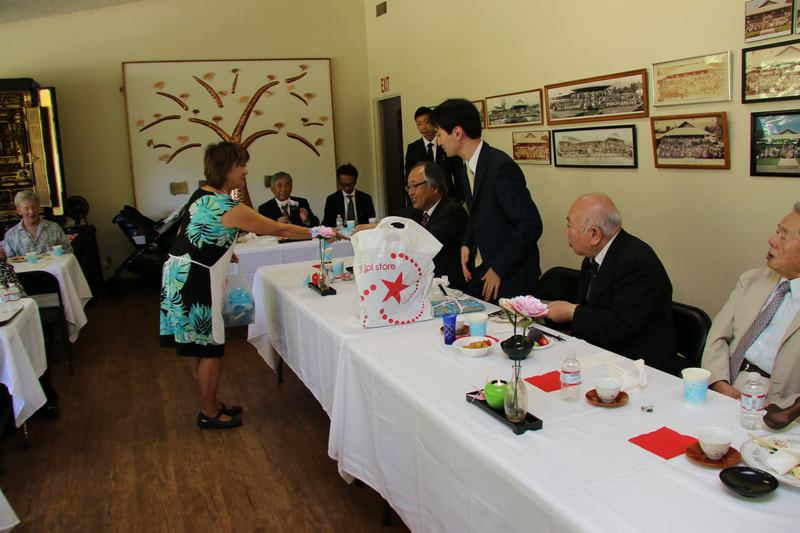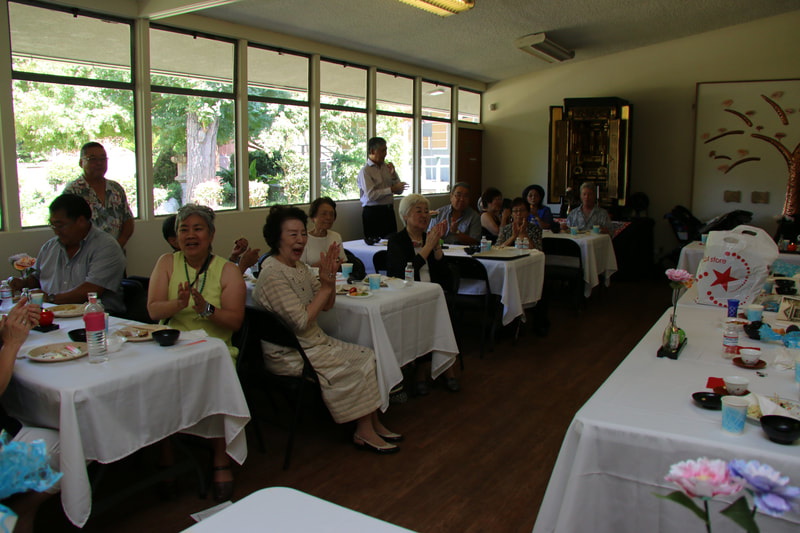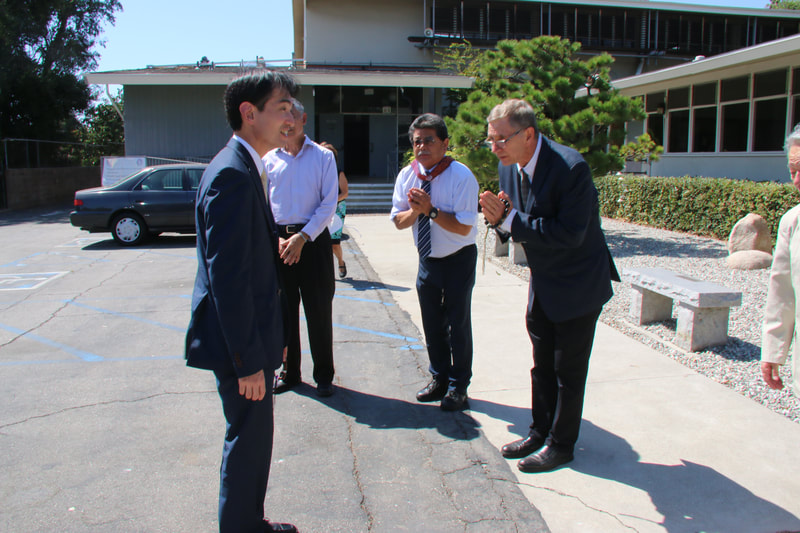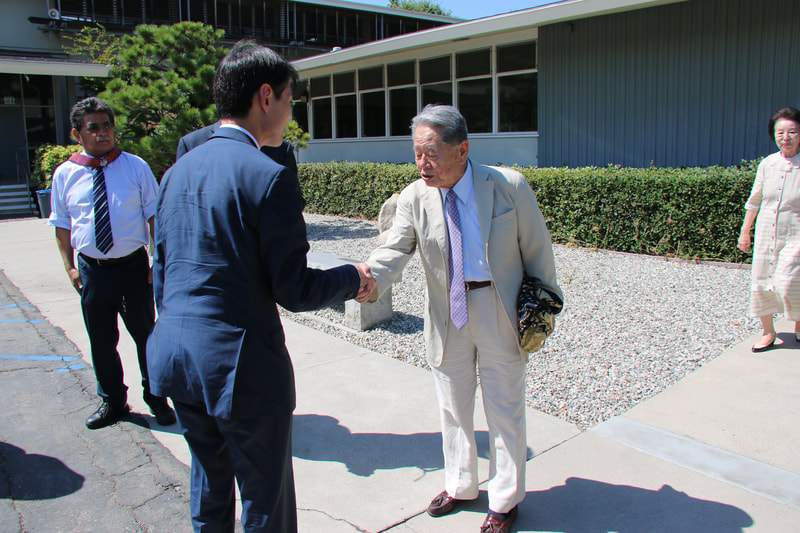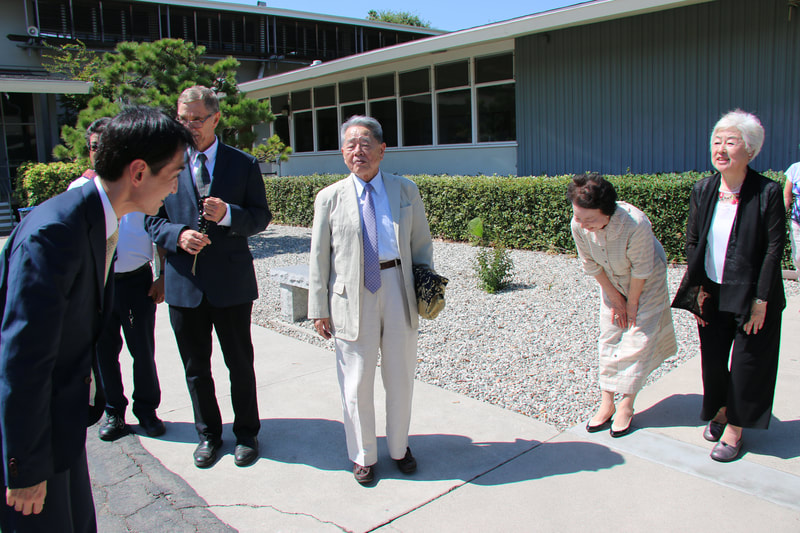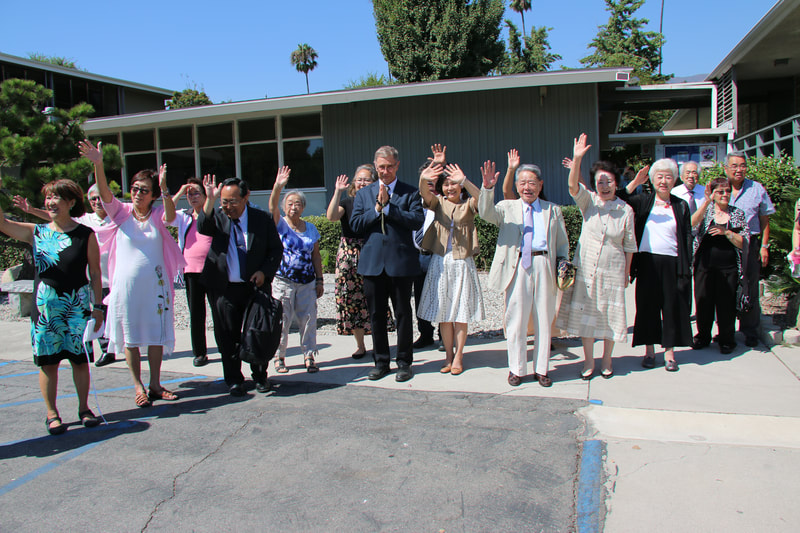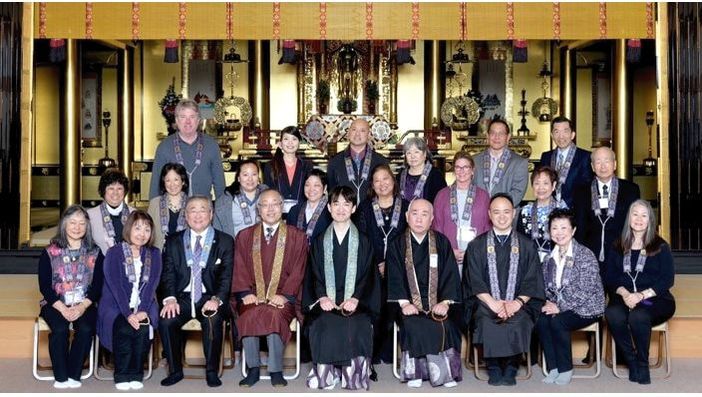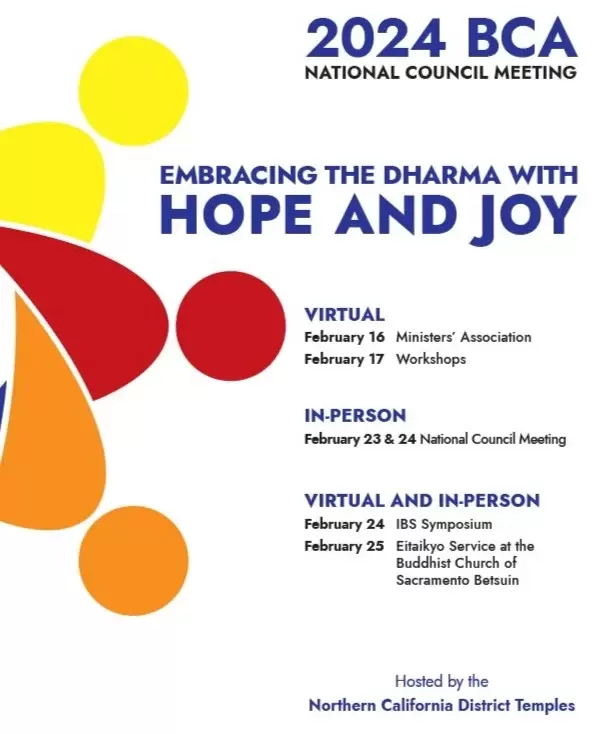Gomonshu Visit - 2019
Bishop's Ascension Ceremony Article and Photo
I recently had the great opportunity to travel to Japan with Jane Utsumi of our BWA. We joined new and old friends from the Venice Hongwanji Buddhist Temple (VHBT), including Rev. Kory Quon, resident minister of VHBT, who was the leader of our group. The primary reason for traveling to Japan was to attend the Dento Hokoku Hoyo at Ryukoku-zan, our head temple in Kyoto, Japan. This service commemorated the ascension ceremony for the Head Priest of the Jodo Shinshu Hongwanji-ha School of Buddhism. The Dento Hokoku Hoyo or Head Priest Ascension Service allowed us, as Jodo Shinshu followers, to take part in commemorating the beginning leadership of Sennyo Shonin, 25th in the line which began with our founder Shinran Shonin over 750 years ago. It was a day full of solemn ceremony and religious significance, truly a once in a lifetime experience!
Following the day of the Dento Hokoku Hoyo we were able to tour various sites in Kyoto, one of the most memorable being the Ohtani Hombyo (Mausoleum) where Shinran Shonin’s ashes are buried. In addition, at the Ohtani Hombyo there is an adjacent building which houses the remains of other Jodo Shinshu followers and the Buddhist names (Hommyo) of all who have passed before us and who had Buddhist funeral services conducted for them. These records are organized by temple, and we were able to see the exact niche which houses Hommyo from the Pasadena Buddhist Temple! We burned incense at our niche.
We traveled from Kyoto to Hiroshima where the group visited the Hiroshima Peace Memorial. What an emotional reminder of the horrors of atomic warfare and why the world must not engage in such activities ever again.
Kagoshima was our next stop – onsen; hot mud baths; and Kakure Nembutsu. We learned that at times during Japan’s history certain Shogun, for political reasons, did not permit Jodo Shinshu followers to practice their religion, or risk being killed. Therefore, in order to hear the Nembutsu these devout followers built shrines inside of very small caves hidden high above the roads on the hillsides, out of view. These caves are called “Kakure Nembutsu.” It was very sad to think of these followers who wanted to hear the Nembutsu so badly that they risked their lives in order to do so, while we take for granted the abundance of opportunities to hear the Nembutsu.
When we reached our last stop, Tokyo, we delighted in the gorgeous but short-lived full bloom of the iconic Sakura!! The unusually cold weather this Spring in the southern part of Japan delayed the sakura bloom till after our visit. At Tokyo’s Shinjuku Park and Ueno Koen we delighted in the full bloom of sakura!
I was also very fortunate to be able to spend time with relatives in Hiroshima and Tokyo, including an uncle whom I had never met. I am so grateful for this opportunity to travel to Japan and to have these religious, cultural and familial experiences. Gassho, Lynne Ozawa
Following the day of the Dento Hokoku Hoyo we were able to tour various sites in Kyoto, one of the most memorable being the Ohtani Hombyo (Mausoleum) where Shinran Shonin’s ashes are buried. In addition, at the Ohtani Hombyo there is an adjacent building which houses the remains of other Jodo Shinshu followers and the Buddhist names (Hommyo) of all who have passed before us and who had Buddhist funeral services conducted for them. These records are organized by temple, and we were able to see the exact niche which houses Hommyo from the Pasadena Buddhist Temple! We burned incense at our niche.
We traveled from Kyoto to Hiroshima where the group visited the Hiroshima Peace Memorial. What an emotional reminder of the horrors of atomic warfare and why the world must not engage in such activities ever again.
Kagoshima was our next stop – onsen; hot mud baths; and Kakure Nembutsu. We learned that at times during Japan’s history certain Shogun, for political reasons, did not permit Jodo Shinshu followers to practice their religion, or risk being killed. Therefore, in order to hear the Nembutsu these devout followers built shrines inside of very small caves hidden high above the roads on the hillsides, out of view. These caves are called “Kakure Nembutsu.” It was very sad to think of these followers who wanted to hear the Nembutsu so badly that they risked their lives in order to do so, while we take for granted the abundance of opportunities to hear the Nembutsu.
When we reached our last stop, Tokyo, we delighted in the gorgeous but short-lived full bloom of the iconic Sakura!! The unusually cold weather this Spring in the southern part of Japan delayed the sakura bloom till after our visit. At Tokyo’s Shinjuku Park and Ueno Koen we delighted in the full bloom of sakura!
I was also very fortunate to be able to spend time with relatives in Hiroshima and Tokyo, including an uncle whom I had never met. I am so grateful for this opportunity to travel to Japan and to have these religious, cultural and familial experiences. Gassho, Lynne Ozawa
